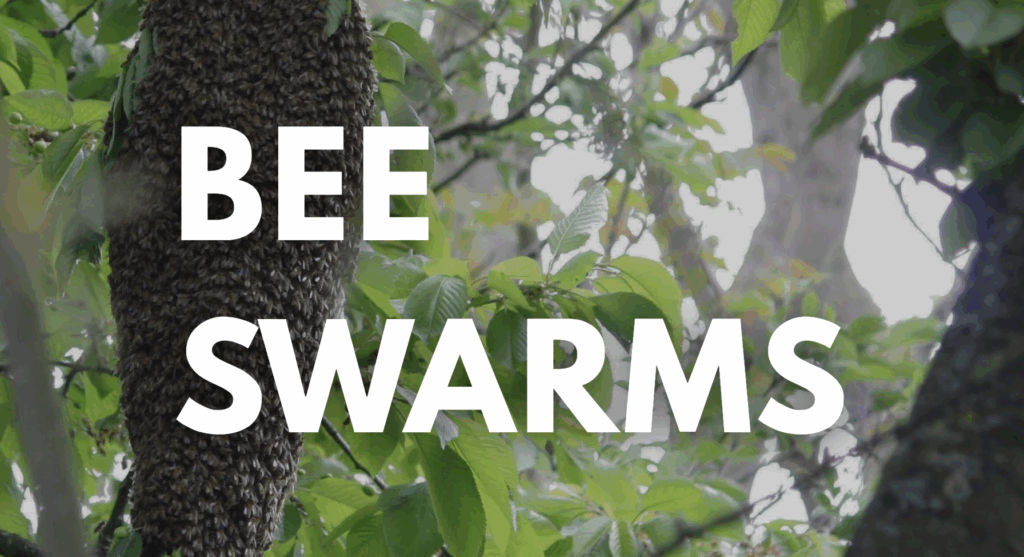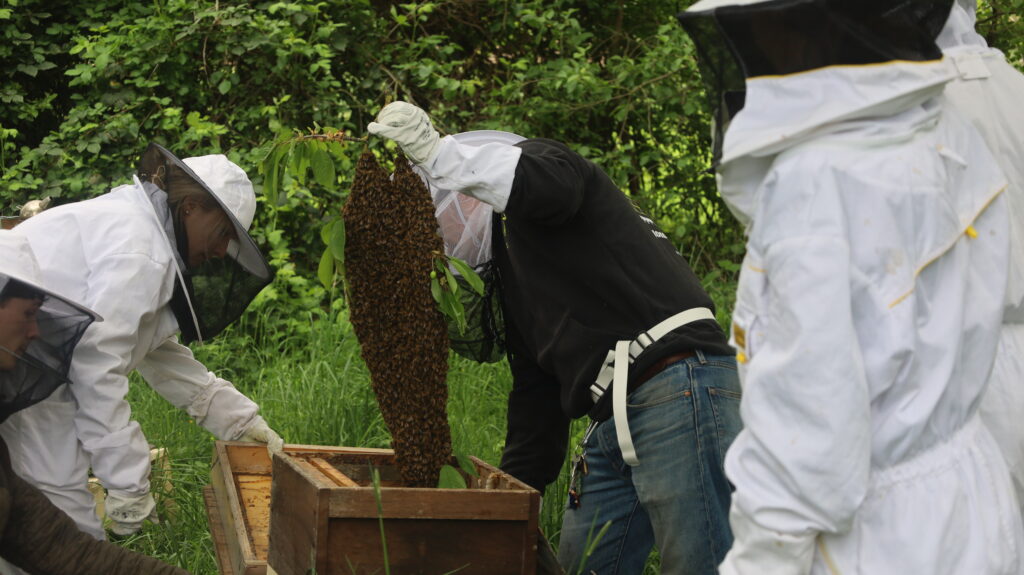Bee swarms: A sign of negligent beekeeping or a healthy colony?
Bee swarms are a natural occurrence in the wild. But in beekeeping, they can be a nuisance.

If you’ve dabbled in beekeeping, then there’s no doubt you’ve come across a swarm or two. Perhaps some of your own bee colonies have swarmed before. In fact, from March until May/June, bee swarms are frequent, and can actually be the sign of a healthy colony.
What is a bee swarm?
Bee swarming is when a colony splits in half (or sometimes into three), due to the presence of another queen in the hive. The old queen flies off with a significant number of worker bees, while the new queen oversees the existing hive, along with many of the worker bees that stayed behind.
It is the group that flew off with the old queen that consists of the swarm. They are seeking a new home, after having decided that there was not enough space in the old hive. Often, these swarms will seek out cracks in houses or barns or the tips of tree branches as their new home. Sadly, depending on how low the temperature drops overnight, the swarm will likely die if they do not find a suitable location or are rescued and re-homed by a beekeeper.
Bee swarms a sign of irresponsible beekeeping?
Some argue that bee swarms, especially in urban areas where the swarming may frighten the public, reflect irresponsible or novice beekeeping. For example, in this opinion piece published in The Guardian, Alison Benjamin argues that bad beekeeping is the cause of honeybee swarms in urban areas.
She writes: “The problem lies with novice beekeepers who aren’t cut out for their new hobby. You can’t just stick a hive at the bottom of the garden or on the roof and collect the honey at the end of the summer. You have to ask yourself, do you really have time in your busy schedule to check your bees at the same time each week? A day late and they could be off. And could you forgo Easter and May half-term holidays?”
Bee swarms are a natural phenomenon
Meanwhile, Tim Gibb, from the Department of Entomology at Purdue University, sees the benefits of honeybee swarms, highlighting in a Purdue University blog post that “swarming bees are actually non-threatening and the swarming behaviour is a natural means for bees to reproduce.” Not only that, but swarming actually represents a big, strong colony — qualities that are highly desired in the winter season.
Outside of reproduction, there is an added benefit to swarming: varroa mite prevention. Varroa mites are one of the greatest threats to honeybees’ survival, and certainly the predominant pest found in honeybees. In terms of swarming, the entity that swarms takes its accompanying varroa mites with it, thereby reducing the number of varroa mites in the hive itself. In fact, artificial swarming is a method used in mite prevention; the idea of this is to create a brood-free period in the hive, therefore preventing mites from multiplying as quickly (varroa begins its infestation on capped brood).
Project B’s approach to swarming

Of course, there’s no denying that when a swarm lands on a playground or in a busy city centre, this can be inconvenient, and even dangerous for those with serious bee allergies. (Although it should be noted that bees are usually quite calm when swarming, as they are not protecting their own home and honey reserves.)
But the question remains: does swarming represent irresponsible beekeeping? The answer is nuanced, and might depend on who’s answering. At Project B, here’s what we believe:
Swarming is a natural process, and can even be a positive representation of the health and size of a colony — something that we keep a close eye on as the seasons get cooler. While swarming can of course occur due to neglectful beekeeping, it can also occur when the beekeeper is doing weekly or biweekly site checks, destroying queen cells, dividing colonies to give the bees more space, marking and tracking the queen, and providing extra honey rooms for added space. Sometimes, even the best beekeepers can miss a queen cell, and once the colony has decided to swarm, there is very little that one can do to prevent them from doing so.
At Project B, we do everything in our power to prevent swarming. Still, it can happen. If it’s our colonies that swarm, we’re mostly a bit disappointed, because it means a temporary drop in local honey production. However, if it’s another colony that swarms and our certified beekeeper is called to the scene, then it can actually be good news: it means we have the opportunity to bring another colony to our apiary!


No responses yet